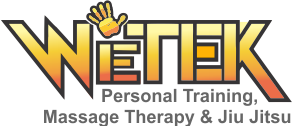The affect of Jiu Jitsu on Soft Tissue
Chronic and Acute Pain:
Chronic dysfunction is something which is very tricky. You see, dear audience: Acute Dysfunction may be identified sooner then Chronic. When one injures themselves stepping off of a curb for example, and twists their ankle, the pain is immediate and noticeable. Chronic is not so much, a postural Chronic dysfunction may take some time to show up.
In Jiu Jitsu one chronic problem we may see is the neck and upper shoulders be in constant spasm due to the locomotion which occurs while we roll, and since grappling arts use much of the head as a source of direction and a torpedo one may say, then all the assisting neck and shoulder muscles such as the flexors and extensors, along with the rotators will get shortened. This is a problem , since the effect of this can be seen by causing pain since muscles pull on bones. However, what makes this even worse is the fact that we use our necks to rotate our heads all day long, whether it is on the job behind a desk, or a manual labor endeavor.
This manual labor places much stress on the muscles of and surrounding the neck, which are already aggravated along with a lasting effect on the rest of the surrounding and supporting groups. Over time, this will cause serious discomfort , which may lead to strains , adhesions and tears if left untreated.
Please invest in a lacrosse ball, and use this ball along with a Thera cane on the areas which are tender after training , along with gentle neck stretches and shoulder stretches. This will safe you in the long run.

Recent Comments